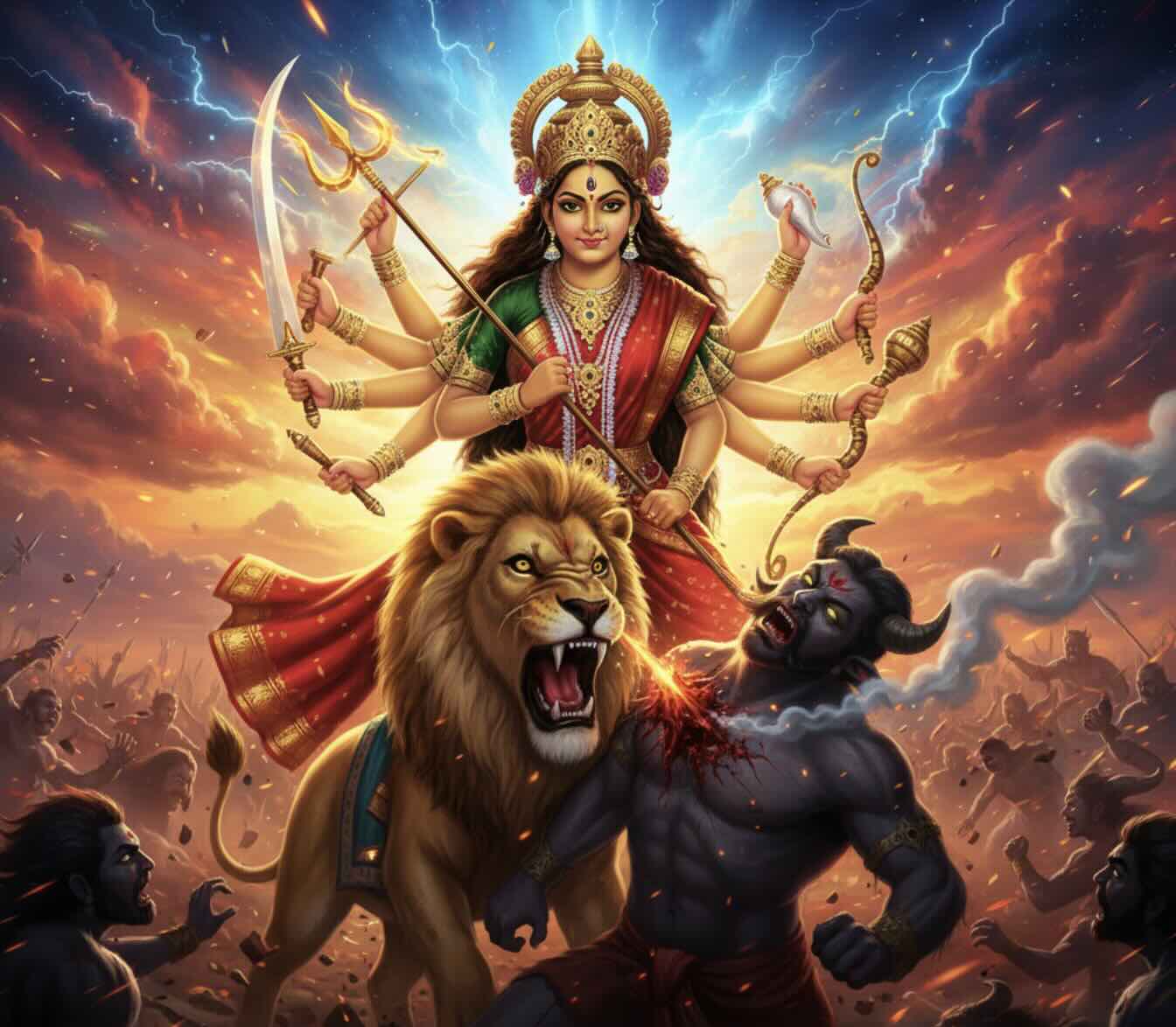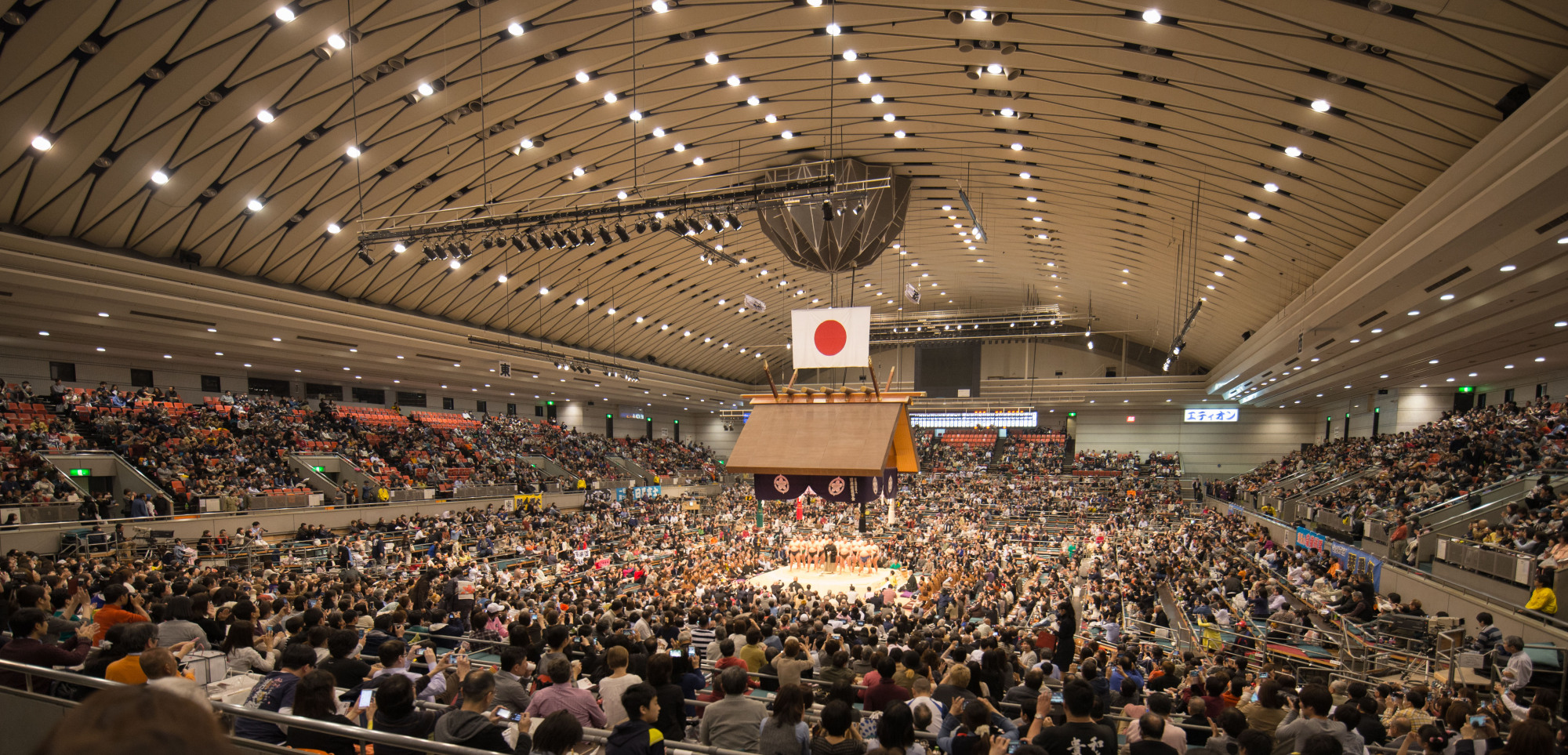Durga Puja: Celebrating the Nine Forms of Devi – A Detailed Guide
Immerse yourself in the rich traditions of Durga Puja, exploring each day dedicated to the nine divine forms of Devi. Discover the significance, rituals, and stories behind this grand festival.

Durga Puja: Celebrating the Nine Forms of Devi – A Detailed Guide

Durga Puja is one of the most vibrant and significant festivals celebrated across India and worldwide. It honors the victory of Goddess Durga over the demon Mahishasura, symbolizing the triumph of good over evil. The festival spans ten days, each dedicated to worshipping different forms of the divine feminine energy, Devi. This guide explores the traditions, significance, and stories behind each day of Durga Puja, offering insights into the cultural and spiritual depth of this cherished festival.
Mahalaya: The Arrival of Devi
The festival begins with Mahalaya, a sacred and significant day that marks the official countdown to Durga Puja. On this day, millions of devotees rise before dawn to listen to the iconic chanting of ‘Mahishasura Mardini’, a devotional hymn that invokes Goddess Durga and seeks her powerful blessings. Mahalaya 2024 is the day when it is believed that Goddess Durga, with her divine children—Lord Ganesha, Kartikeya, Goddess Lakshmi, and Goddess Saraswati—descends from her celestial home in Mount Kailash to visit Earth, her maternal home. This day is deeply symbolic, setting the stage for the 10-day Durga Puja festival, and is celebrated with great devotion and reverence across India, particularly in West Bengal, Bangladesh, and other parts of the world where Bengali communities thrive. Mahalaya also represents the arrival of Devi Durga, who embodies the triumph of good over evil, and the celebrations that follow honor her as the protector of humanity and the destroyer of evil forces like Mahishasura.

Day 1 – Shailaputri: The Daughter of the Mountains

Devi Name: Shailaputri On the first day, devotees worship Shailaputri, meaning 'Daughter of the Mountains'. She is the first among the Navadurga and is considered an embodiment of the collective power of Brahma, Vishnu, and Shiva. Depicted riding a bull (Nandi) and holding a trident and lotus, Shailaputri symbolizes purity and devotion. She is associated with the Muladhara Chakra (root chakra), representing the start of the spiritual journey.
Day 2 – Brahmacharini: The Ascetic Goddess

Devi Name: Brahmacharini The second day is dedicated to Brahmacharini, the goddess who undertook severe penance to win Lord Shiva's love. She embodies perseverance, asceticism, and devotion. Holding a rosary in one hand and a water pot (kamandalu) in the other, she signifies the spiritual enlightenment that comes from discipline and meditation. Worshipping her inspires devotees to adopt virtues of self-restraint and piety.
Day 3 – Chandraghanta: The Warrior Goddess

Devi Name: Chandraghanta On the third day, Chandraghanta is worshipped. She is named for the crescent moon (chandra) shaped like a bell (ghanta) adorning her forehead. Riding a tiger, she embodies bravery and is always ready to battle evil. Chandraghanta's ten hands carry various weapons, and her third eye is always open, symbolizing alertness. Devotees seek her blessings for courage and strength to face adversities.
Day 4 – Kushmanda: The Creator of the Universe

Devi Name: Kushmanda The fourth day honors Kushmanda, the goddess whose radiant smile created the universe. Her name combines three words: 'Ku' (a little), 'Ushma' (warmth), and 'Anda' (egg), meaning the cosmic egg or universe. Riding a lion and holding a rosary and weapons, she represents the cosmic energy that pervades the universe. She is associated with the Anahata Chakra (heart chakra), symbolizing love and compassion.
Day 5 – Skandamata: The Mother of Skanda

Devi Name: Skandamata On the fifth day, devotees worship Skandamata, the mother of Lord Skanda (Kartikeya), the god of war. Depicted riding a lion and carrying baby Skanda in her lap, she symbolizes maternal love and the strength of a mother. She sits on a lotus, earning her the name Padmasana. Skandamata is associated with the Vishuddha Chakra (throat chakra), representing purity and communication.
Day 6 – Katyayani: The Warrior Goddess

Devi Name: Katyayani The sixth day is dedicated to Katyayani, born to Sage Katyayana after his intense penance. She is one of the most aggressive forms of Durga, depicted with four arms and riding a lion. Katyayani is the slayer of the demon Mahishasura and symbolizes the destruction of evil forces. She is associated with the Ajna Chakra (third eye chakra), representing intuition and wisdom.
Day 7 – Kalaratri: The Fearsome Form

Devi Name: Kalaratri On the seventh day, Kalaratri is worshipped. With a dark complexion, disheveled hair, and a fearless posture, she is the destroyer of darkness and ignorance. Despite her fearsome appearance, she is benevolent to her devotees. Kalaratri rides a donkey and is associated with the Sahasrara Chakra (crown chakra), symbolizing the infinite knowledge and liberation.
Day 8 – Mahagauri: The Epitome of Purity

Devi Name: Mahagauri The eighth day honors Mahagauri, symbolizing purity and serenity. Legend says she regained her fair complexion after rigorous penance, leading to the name 'Mahagauri' (extremely fair). Riding a bull or a white elephant, she has four hands and represents forgiveness and inner peace. Devotees seek her blessings for the purification of the soul and relief from all sufferings.
Day 9 – Siddhidatri: The Granter of Boons

Devi Name: Siddhidatri On the ninth day, Siddhidatri is worshipped. She is the bestower of all siddhis (supernatural powers) and fulfills the desires of her devotees. Sitting on a lotus and surrounded by gods, she completes the manifestation of Goddess Durga. Siddhidatri is associated with the merging of the individual consciousness with the universal consciousness, leading to ultimate enlightenment.
Vijayadashami: The Triumph of Good Over Evil
Vijayadashami, also known as Dussehra, marks the culmination of Durga Puja. It signifies the victory of good over evil, as Goddess Durga slays Mahishasura. On this day, idols of the Goddess are immersed in rivers and oceans in a ritual called Visarjan, symbolizing her return to the celestial abode. It's a day of mixed emotions—sadness at her departure and joy in the triumph of righteousness.
Throughout the festival, communities come together to erect elaborate pandals (temporary structures) showcasing artistic representations of the Goddess. The air is filled with the sounds of dhak (drums), conch shells, and chants. Traditional dances like Dhunuchi Naach are performed, and devotees indulge in Anjali (offering prayers) and Bhog (sacred food).
| Day | Date (2024) | Devi Name | Significance |
|---|---|---|---|
| Day 1 | October 3 | Shailaputri | Daughter of the Mountains |
| Day 2 | October 4 | Brahmacharini | Embodiment of Devotion |
| Day 3 | October 5 | Chandraghanta | Warrior Goddess |
| Day 4 | October 6 | Kushmanda | Creator of the Universe |
| Day 5 | October 7 | Skandamata | Mother of Skanda |
| Day 6 | October 8 | Katyayani | Destroyer of Evil |
| Day 7 | October 9 | Kalaratri | Destroyer of Darkness |
| Day 8 | October 10 | Mahagauri | Goddess of Purity |
| Day 9 | October 11 | Siddhidatri | Granter of Boons |
| Vijayadashami | October 12 | Triumph of Good Over Evil |
Conclusion
Durga Puja is not just a festival but a celebration of life, culture, spirituality, and the eternal victory of good over evil. Each form of Devi worshipped during these nine days teaches us valuable lessons of courage, compassion, devotion, and wisdom. As we participate in the festivities, let us embrace these virtues and strive to embody the principles that Goddess Durga represents. May the divine blessings of Maa Durga bring joy, prosperity, and enlightenment to all. Shubho Durga Puja!
Wishes from UP CM Yogi Adityanath Ji
सर्वमङ्गलमङ्गल्ये शिवे सर्वार्थसाधिके।
— Yogi Adityanath (@myogiadityanath) October 2, 2024
शरण्ये त्र्यम्बके गौरि नारायणि नमोऽस्तु ते॥
सभी भक्तों एवं प्रदेश वासियों को आदिशक्ति माँ दुर्गा की उपासना के पावन महापर्व 'शारदीय नवरात्रि' की हार्दिक बधाई व शुभकामनाएं!
माँ भगवती सभी के जीवन को सुख-शांति, समृद्धि व आरोग्यता से अभिसिंचित… pic.twitter.com/Rnd6fBCn4T
Chat Room: Discuss Durga Puja: Celebrating the Nine Forms of Devi – A Detailed Guide
Start a New Chat

神戸ルミナリエ2026:阪神淡路大震災追悼 光の鼓動が神戸中心部を照らす1月30日-2月8日 78mスパッラーラウォール&メリケンパーク光回廊
神戸第31回ルミナリエ 東遊園地スパークリングクラウン 旧居留地イルミネーション フラワークロック音楽&グルメ チケットガイド完全版
2 days ago
Read more

Durga Puja and Dussehra 2025: A Divine Celebration of Good Over Evil
Embrace the divine festivities of Durga Puja and Dussehra from September 28 to October 2, 2025. Discover the important dates, sacred rituals, powerful mantras, and the cultural grandeur of India's most cherished festival.
3 months ago
Read more

Maha Shivaratri 2025: Significance, History & Celebrations
Exploring the Date, Legends, and Traditions of This Sacred Night
10 months ago
Read more

Maha Shivaratri 2025: Date, Significance, Fasting Rules & Grand Celebrations in New Delhi and Over the World
Discover the spiritual essence of Maha Shivaratri 2025, its auspicious date, fasting rules, and the grand events happening in New Delhi.
10 months ago
Read more

Vasant Panchami 2025: Date, History, Traditions & Puja Timings
Explore the Significance, Story, and Celebrations of Vasant Panchami Across India
11 months ago
Read more

Kala Ghoda Arts Festival 2025: A Celebration of Culture & Creativity
Explore the Highlights, Unique Facts & the Significance of Mumbai’s Iconic Art Festival
11 months ago
Read more

Upcomig Surajkund Mela 2025: Dates, Theme State & the Fascinating History Behind It
Everything You Need to Know About the Iconic Handicrafts Fair in Haryana
11 months ago
Read more

Spirit Halloween Expands with New Christmas Pop-Up Stores
Festive Pop-Up Stores
1 year ago
Read more

Upcoming Cricket Match: India vs New Zealand on 23 Jan 2026
Catch the live action between India and New Zealand on 23 Jan 2026.
1 day ago
Read more

Upcoming Cricket Match: India vs New Zealand on 21 Jan 2026
Catch the live action between India and New Zealand on 21 Jan 2026.
1 day ago
Read more

Upcoming Cricket Match: India vs New Zealand on 18 Jan 2026
Catch the live action between India and New Zealand on 18 Jan 2026.
1 day ago
Read more

Upcoming Cricket Match: India vs New Zealand on 14 Jan 2026
Catch the live action between India and New Zealand on 14 Jan 2026.
1 day ago
Read more

Upcoming Cricket Match: India vs New Zealand on 11 Jan 2026
Catch the live action between India and New Zealand on 11 Jan 2026.
1 day ago
Read more

ダイハツジャパンオープン2026 完全ガイド:7月14-19日 東京体育館 BWFスーパー750 賞金950,000ドル シングルスダブルス速報 山口茜桃田賢斗出場予想
東京渋谷メトロ体育館インドアコートで世界最高峰ラリー!チケット料金・アクセス・日程・注目対戦カードまとめ BWFワールドツアー日本大会詳細
2 days ago
Read more

入間市武道祭2026完全ガイド:埼玉県立武道館で剣道・柔道・弓道・合気道・ナギナタ・居合道・少林寺拳法デモンストレーション
伝統武道の祭典!無料観覧・子供体験・武士道文化解説・アクセス方法・周辺観光スポット満載 埼玉入間武道イベント2026フェブ
2 days ago
Read more

大阪春場所2026完全ガイド:3月8-22日EDIONアリーナ大阪 大銀座力士対戦スケジュール・チケット料金・座席選び最強攻略
春の名物横綱土俵入り&マクウチ全日程!初心者向けちゃんこ鍋体験・アクセス方法・当日券情報満載 大阪相撲大会2026ハチバショ
2 days ago
Read more
Stay Ahead with Upcoming News and Events
Get the latest updates on upcoming mobiles, televisions, movies, concerts, live events, and everything significant that’s coming soon.


